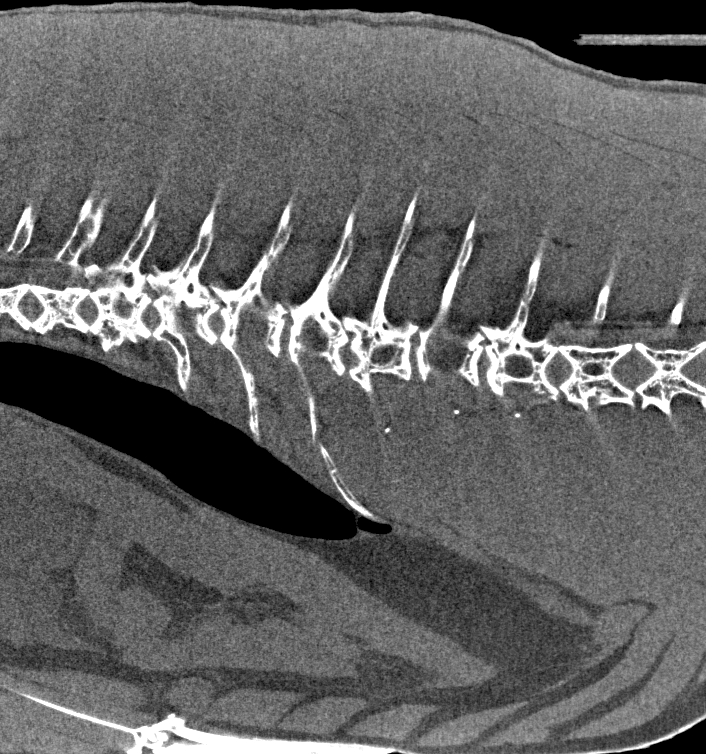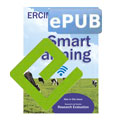by Joost Batenburg and Robert van Liere (CWI)
The Computational Imaging group at CWI develops mathematical techniques and algorithms for 3D image reconstruction. One of the main application areas is industrial quality control and rapid inspection, which is becoming increasingly important in the food processing industry. Characteristics that need to be tested and possibly also quantified include appearance of the product (size, shape, colour), texture, flavour, as well as internal factors (chemical, physical, microbial).
The food processing industry has a rich history of applying 2D X-ray imaging for the analysis of their products. The advantage of X-ray imaging is that it is a non-destructive technique, i.e. the internal morphology of the products can be inspected, without having to cut open each product. However, traditional 2D X-ray imaging cannot be used to determine the exact 3D location of an anomaly and relevant features can sometimes not be seen in the individual X-ray images, requiring computational 3D imaging techniques that combine the information from multiple X-ray images.
The key challenge of introducing new X-ray imaging techniques in an industrial environment is that on one hand the image acquisition and algorithmic analysis must take place in a very short time, as throughput requirements are extremely high. On the other hand, the fact that only a few X-ray images can be taken in this short time results in a highly underdetermined image reconstruction problem, as the data is insufficient to compute a full 3D volumetric image.
Tomography
The problem of reconstructing a 3D image of an object from its projections leads to a mathematical inverse problem known as tomography. The Filtered Backprojection algorithm (FBP) is by far the most common algorithm for computing a reconstruction, as it is capable of computing accurate reconstructions with high computational efficiency, provided that high quality projections have been acquired for a sufficiently large number of angles, limiting its usefulness for real-time reconstruction in an industrial setting.
Algebraic algorithms
Algebraic algorithms model the reconstruction task as an optimisation problem that is solved iteratively. Compared to FBP, algebraic methods have the advantages that limited data problems can be modelled accurately by adjusting the optimisation problem and that noise in the projections can be effectively averaged. Moreover, certain types of prior knowledge, such as nonnegativity of the attenuation coefficients and image sparsity, can be effectively incorporated in the reconstruction algorithm using the regularisation function. However, at present, the computational requirements of algebraic algorithms are far too high for the real-time requirements of an industrial production setting.
Algebraic filter methods
In recent work, we have demonstrated that in some cases the computational bottlenecks of algebraic methods can potentially be overcome by introducing a new class of hybrid reconstruction algorithms that combine the favourable computational properties of FBP with the power and versatility of algebraic methods [1,2]. Our new approach, which we refer to as algebraic filter methods, translates the analytical properties of the tomography problem into the domain of algebraic methods, replacing the generic matrix representation with convolution-based filter operators. The idea is to compute one or more filters h for the FBP algorithm in such a way that the resulting FBP reconstruction resembles the image computed by a more expensive iterative method. Surprisingly, it is possible to obtain image quality almost identical to that of iterative methods with the computational performance of FBP, making the approach suitable for industrial use in high-throughput, limited-data scenarios.
![Figure 1: 3D reconstruction of a pomegranate from high-resolution X-ray CT data, clearly showing the complex internal morphology and textures. This dataset is publicly available [3].](/images/stories/EN113/batenburg1.png)
Figure 1: 3D reconstruction of a pomegranate from high-resolution X-ray CT data, clearly showing the complex internal morphology and textures. This dataset is publicly available [3].

Figure 2: Reconstruction of a small part of a fish, showing the bones, muscle and some organs. The 3D location of bones can be computed
in near real-time (approx. 200ms). Picture: CWI.
In May 2017, CWI started the FleX-ray lab, where a highly flexible X-ray CT system is combined with high-performance computing capabilities, making it possible to rapidly prototype novel computational methods for 3D X-ray imaging, and experiment with various geometrical scanning configurations. Due to their combination of computational efficiency and accuracy in limited data scenarios, algebraic filter methods can potentially enable the effective use of 3D imaging for quality control in a broad range of food products, which we are currently exploring further in ongoing research projects with high-tech partners from the food industry.
3D reconstruction of a pomegranate from high-resolution X-ray CT data, clearly showing the complex internal morphology and textures. This dataset is publicly available [3].
References:
[1] D.M. Pelt and K.J. Batenburg: “Improving Filtered Backprojection Reconstruction by Data-Dependent Filtering”, IEEE Transactions on Image Processing, 23(11), 4750-4762, 2014
[2] L. Plantagie and K.J. Batenburg: “Algebraic filter approach for fast approximation of nonlinear tomographic reconstruction methods”, J. Digital Imaging, 24(1), 013026, 2015
[3] DOI: 10.5281/zenodo.1144086
Please contact:
Joost Batenburg, Robert van Liere
CWI, The Netherlands











